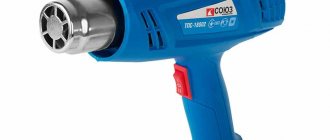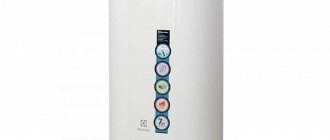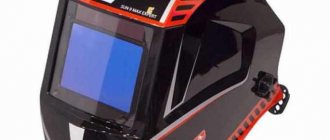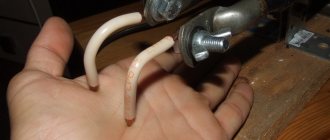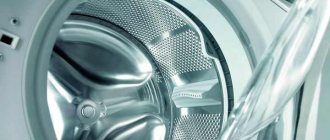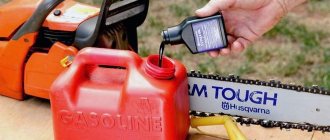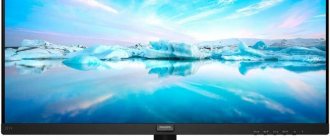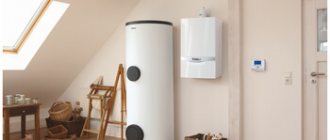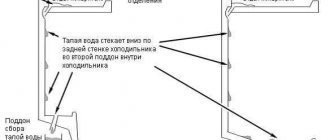A welder's eyes must be protected better than in almost all other professions. Because the eyes are the highest risk area during welding from a safety point of view. This is the action of light radiation from an arc, sparks and splashes of metal when it is significantly heated.
The fact that the face and eyes of the welder must be closed is not even discussed - this mandatory requirement is beyond doubt. But what these means should be so that, on the one hand, they perfectly protect the face and eyes, and on the other hand, do not interfere with work and provide satisfactory comfort for the welder - this issue should be discussed seriously and from all sides.
Modern masks and shields are produced in a wide variety of options - to suit every taste and budget. They differ in their design and many other parameters. What principles should you use to choose a mask so that it is the best option for you? The right choice or welding of glasses is the most important issue, because we are talking about your health.
And here is GOST, where to go
There is no need to go anywhere, there are GOSTs for welding protective masks, and thank God, let’s rejoice in this fact. Because correct models with all the components are no joke.
Changes have been made to it periodically and it still works great. According to the format of this GOST, we will deal with both the basic concepts and technical nuances relating to masks, shields, glasses, light filters and everything else related to protecting the eyes and face during welding work.
So, a welding helmet consists of two parts: these are plastic housings and special light filters for welding masks. Most often they are sold together, but glass for welding is also offered separately.
Additional elements are found on specialized welding helmets with air supply, designed for work in harsh conditions. Also on the market are simply goggles for gas welding - protective equipment without a housing to protect the face.
Chameleon mask.
The housing itself has requirements that are easy to understand: the material of manufacture must be resistant to splashes of molten metal, sparks, and in addition, it must not conduct electrical current under any conditions. Typically, housings are made from a variety of plastics or fiber.
The most important and understandable criteria for choosing a suitable model are:
- weight and dimensions;
- head size, angle of inclination;
- planting depth;
- the presence of adjustment of the angle of inclination or depth of planting, its quality;
- adjusting the distance between the light filter and the face;
- reliability of the regulation system.
The light filter for a welding helmet can be of various shapes - from round to rectangular. The material used is most often organic glass or polycarbonate. In order to choose the right mask for welding, it doesn’t hurt to understand the nuances of the ultraviolet and infrared radiation spectra.
Rating of premium welding masks
The TOP 3 includes reliable welding helmets with a flexible adjustment system. The cost of the model starts from 3000 rubles.
3
RESANTA MS-5
RESANTA MS-5 is a welding mask for reliable protection of the eyes and face of the craftsman.
Welding helmet RESANTA MS-5
Characteristics:
- Price – 3,390 to 4,341 rubles;
- User rating – 4.5;
- Type – chameleon with manual adjustment;
- Shading degree – DIN 9-13;
- Viewing window – 100×60 mm.
The device protects the face and neck from visible light, ultraviolet and infrared radiation. The model features a flexible filter adjustment system. The operator can adjust the degree of sensitivity and delay time. Additionally, the device provides cutting and grinding modes.
Advantages:
- Availability of grinding mode;
- Lightweight but durable body;
- Comfort at work;
- Flexible adjustments;
- Ergonomic headrest;
- Trouble-free operation of automation.
Flaws:
- The two upper arc sensors are a sham, only the two lower sensors work.
2
Aurora A-777 Heavy Metal
Aurora A-777 Heavy Metal is a welding helmet equipped with an automatic light filter.
Welding helmet with a bright design Aurora A-777 Heavy Metal
Characteristics:
- Price – 3,388 to 4,120 rubles;
- User rating – 4.8;
- Type – chameleon with manual adjustment;
- Shading degree – DIN 9-13;
- Viewing window – 99×45 mm.
The model has an original design. It is suitable for both amateurs and professionals. The design includes a special film that protects against the adhesion of splashes of hot metal. Has a good viewing angle. The fastening adjustment system allows you to adjust the mask for the most comfortable fit.
Advantages:
- Stylish bright design;
- Easy to put on;
- Flexible adjustment system;
- Suitable for different types of welding;
- Guarantee period;
- Convenient fastening system;
- Lightweight, weighing only 400 g;
- Reliable housing made of durable polyethylene.
Flaws:
- None.
1
Fubag Optima 4-13 Visor
Fubag Optima 4-13 Visor is a professional Chameleon welding mask that allows you to safely carry out welding work.
Welding helmet for safe work Fubag Optima 4-13 Visor
Characteristics:
- Price – 3,105 to 4,690 rubles;
- User rating – 4.7;
- Type – chameleon with manual adjustment;
- Shading degree – DIN 4-8/9-13;
- Viewing window – 100×65 mm.
There is a welding and grinding mode, the design has internal adjustment of the degree of darkness, delay time and sensitivity. The light filter automatically reacts to the ignition of the arc, moving from a light state to a dark state. When raised, the center of gravity moves lower to reduce stress on the head and neck. The mask can be used at temperatures down to – 10 degrees. It runs on a replaceable lithium battery and a solar battery.
Advantages:
- High quality filter;
- The controls are located under the mask, which protects them from accidental contact during welding;
- Comfortable headband;
- Shockproof housing;
- High protection efficiency;
- Flexibility of tinctures;
- Fast filter clarification;
- Minimum response time;
- Powered by lithium or solar battery;
- Manufacturer's warranty 2 years;
- Suitable for argon welding;
- Durable;
- Reliable protection of the cornea from light radiation with a class 1/1/1/1 filter
- Wide view.
Flaws:
- None.
Classification of welding helmets
Here are the main categories of welding protective equipment:
Protective equipment with a fixed filter
The most common models with a basic fastening system. You have seen this many times in old Soviet films: in order to look at the results of his work, and indeed the whole world, the welder raises his mask with his hand. Then, to continue working, he lowers it with a simple nod of his head.
This system had its advantages and disadvantages. A very convenient moment was the free right hand. The advantages included, of course, the simplicity of the design. But this model also has a serious drawback: when the mask is raised, the eyes are completely unprotected. In such situations, for example when removing slag, additional glasses had to be worn to protect the eyes.
Models with rising filter
– here they took more care to protect the eyes: when raising the welding filters, the eyes remain protected by a special plastic shield, which made it possible to safely clean the slag without the risk of eye damage.
Chameleons
The most popular modern models of welding helmets. The main feature of chameleons is the technical features of the light filter.
Masks with filtration and air supply
Features of settings.
Welding helmets with air supply can be called specialized equipment for use during work in difficult conditions. First of all, this concerns emissions when working with toxic metals. These models are sometimes similar to gas masks due to the devices for filtering and supplying air.
There are options in which you can work underwater. There are a wide variety of air welding masks available on the market. All of them are more expensive than other models.
Naturally, the choice of welding helmet will directly depend on the type of welding work you plan to do. This choice is also influenced by other factors: the volume of work you plan, welding technology or current strength. TIG technology, for example, requires, for safety reasons, darkening the glasses in eye glasses.
And for MMA technology, the most common standard mask will do. Well, if you do welding work from time to time and very little at a time, there is no point in spending money on a professional and bulky mask; you can get by with a regular welding shield. For example, you are unlikely to need expensive welding helmets with air supply.
What types of welding helmets are there and how they differ
The most popular question among novice welders is the choice of personal protective equipment. And the main tool is a welding helmet, which is not so easy to choose if you do not know its main features, differences, characteristics and operating principle. First, let’s look at what types of PPE there are for a welder:
- Glasses differ from a mask not only in the external design, but also in the protection feature. If the mask protects the entire part of the face, then the glasses are intended solely to protect the eyes. They are usually used by experienced craftsmen when performing work in non-standard conditions, for example, at heights, when using a mask is impossible or inconvenient. Glasses for welders are of the open type, which are similar to ordinary ones, and are fixed behind the ear with arms. The glass in them is made of polycarbonate, and PPE is used as an auxiliary device. Closed glasses differ from open glasses by the presence of a special tape, with the help of which the product is securely fixed on the head. Devices of this type may have glass made of tinted glass, polycarbonate or Chameleon.
- A mask is the most common type of protective equipment for a welder. The main advantage of the product is the comprehensive protection of not only the welder’s face and neck from the adverse effects of welding work, but also the head. Masks can be simple (with tinted lenses), which are used extremely rarely today, as well as Chameleon. The correct name of the products is Chameleon - a protective welder's mask with an automatic darkening function. The product is fixed on the head using a special adjustment frame.
- Shield - Some welders continue to use another type of safety device. The shields have a flat base with built-in tinted glass at the top. A shield differs from a mask in that it does not protect the head as a whole, but only the front part. The shields are ordinary with tinted glass, which the welder needs to hold with one hand (shown in the photo).
Manufacturers produce Chameleon-type shields, but the demand for them is less than for welding helmets.
Masks are classified into subtypes depending on the presence of additional functionality. They come in the following types:
- With a lifting light filter - it differs from a regular mask in that the tinted glass is attached with a hinge joint and can be lowered or raised. Under the darkened glass there is a transparent glass through which the welder can control the welding process. Products of this kind are becoming less and less popular.
- With forced air supply - this type of mask requires special attention. The equipment is characterized by an increased degree of protection, and therefore its cost is correspondingly high. In addition to the light filter, the mask includes an air filtration system, preventing harmful substances from entering the welder’s respiratory system. The system is represented by an air blower, through which not only fresh air is supplied to the face, but also cool air, eliminating heat stroke. Through the return valve, carbon dioxide is removed to the outside. The blower operates using batteries. Typically, these types of devices are equipped with more powerful lithium-ion rechargeable batteries.
Naturally, a beginner who sets out to buy a welding helmet needs to choose devices from the Chameleon type mask category. Not only do they provide maximum protection, but they are also easy to use.
And now the filter
The light filter can rightfully be called the main part of the welding helmet. Modern light filters can vary in size and degree of shading. Their design depends on the mask model and, of course, on the features and types of welding process.
The most advanced models of modern light filters are chameleons, which are suitable for almost all types of welding work.
The classification of welding glass is simple:
- Constantly dimmable glass.
- Changeable tinted glass.
- Diopter lenses for welding equipment.
Constantly dimming filters
These are classic and long-familiar models for welders. Nickel or copper are added to glasses for welding helmets as additional chemical components. These additives are the main darkening factors; they reduce the light transmission of glass. Another option is a mirror surface to reflect light rays.
Protective filter.
Fixed-darkening filters come in two degrees: Western DIN and domestic C. The dependence of the degree of dimming on the current strength is as follows: the greater the ampere, that is, the current strength, the higher the degree of shading of the glass should be in the mask. Despite the disadvantages of this type of mask listed above, there are also significant advantages. First of all, it is strength, durability and low cost.
Color filters with replaceable dimming
Chameleons are a new generation of glass. They were invented to get rid of the main disadvantage of older models with non-replaceable glass - the need to manually lift the glass outside the welding process: to, for example, remove slag or clean a seam. A completely different matter is chameleons with automatic dimming in thousandths of a second before igniting the electric arc.
The chameleon can have up to three of these screens with additional screen film for protection from ultraviolet and infrared radiation. And that's not all: an additional polymer layer is designed to protect against drops of molten metal.
Here are the advantages and features of the chameleon light filter for a welding helmet:
- Use of liquid crystal technologies. The filters in chameleons are made of a layer of liquid crystals with a special polarizing film. When light rays pass through, these crystals line up in a strict order, thus blocking the light, which becomes polarized.
- The danger of eye injury when welding is caused by two types of radiation - ultraviolet and infrared spectra. A properly adjusted light filter without polarizing film perfectly protects against them. But if, God forbid, such filters fail, their protection against UV and IR becomes zero. But chameleons will protect you even in a faulty state: additional filters are built into its design.
- Chameleons are extremely sensitive to environmental temperature: they lose their functional properties at temperatures below 5 – 10°C. This happens because the polarizing layer by its nature “works” several times slower in a cool external environment.
- The degree of sensitivity of the filter is like a chameleon. In other words, this is the threshold for triggering the welding helmet depending on the brightness of the electric arc. This level is perfectly adjustable: in the settings you can even exclude the automatic operation of the filter in bright sunshine.
- Delaying the filter closure also prevents the chameleon from automatically triggering in response to the bright glow of hot metal. The same property helps to avoid fading or flickering of the filter during short stops in the welding process. This kind of adjustment is very important in modern welding conditions: after all, the electric arc has very different brightness depending on the type of work. The most common filter darkening rate is 9 – 13
Diopter lenses
This option is intended for special work with small parts or thin metal. In addition, they are indicated for people with vision problems. Diopters enlarge the image of objects for convenient control of the welding process.
Typically, such lenses are produced in a universal size to be installed on the vast majority of models. These lenses are made of special optical plastic. The lenses themselves are selected personally. They are installed in the middle of the mask.
How to choose a chameleon welding helmet for argon TIG welding?
The optical class of the welding helmet filter should be no worse than 1/1/1/2, and better - four units 1/1/1/1. The classification of light filters appeared relatively recently and perhaps not everyone still knows what these numbers mean. Let's figure it out. The first digit of the optical class shows the diopter of the filter - how much it distorts the outlines of objects. The second number is the light scattering indicator, determines the transparency of the filter and affects the clarity of visible objects; the higher the class, the clearer the picture. The difference between the first class of light scattering and the third is exactly the same as if you first look through clean glass and then through fogged glass. The third number is an indicator of the unevenness of darkening when viewing the filter at a right angle. And in fourth place is the angular dependence of the degree of darkness. Of all four indicators, the first two affect eye fatigue the most. Using a low-quality welding helmet with a low optical class is like reading through someone else’s glasses, and even with slightly foggy glasses. Not a very pleasant experience. The pupils constantly vibrate, trying to focus, but fail due to poor optics, which causes rapid eye fatigue and fatigue. For TIG welding there must be four optical sensors, at least not less than three. Many people think that four sensors are needed only for the case when the welder stuck his head into a hard-to-reach place and blocked the two lower sensors, then the other two will work. This is partly true, but when TIG welding four sensors are needed based on the characteristics of the arc itself. Optical sensors react to sudden changes in lighting and arc flicker. If the sensors simply responded to light, then the filter would always be in a dark state during the daytime. When TIG welding with constant DC current, especially at low currents, sometimes the arc is so stable that it practically does not flicker, and the sensors perceive this as background lighting and the light filter spontaneously opens during the welding process. However, unlike filters with two optical sensors, with four sensors the probability of accidental opening of the filter is reduced to zero, due to the high sensitivity of such a circuit to flicker, or, scientifically speaking, to the variable component of radiation. The sensors are located at different angles and better capture the difference in radiation.
The next thing to pay attention to is the shade range, you need to have two ranges 5-9/9-13DIN. Again, when TIG welding at low currents, especially simple steel structures, with a darkness level of 9DIN nothing is visible and you need to set it to 8DIN. Those with sharper eyesight can still see something, but older welders cannot do without the first range. Unlike welding helmets with traditional glass, where the darker the darker, the more protected the eyes, real welding chameleons do not have this dependence. Thanks to special protective layers, ultraviolet (UV) and infrared (IR) radiation are reflected and do not pass through the filter. Only visible light passes through. Therefore, eye protection is constant and does not depend on the degree of darkening, which makes it easy and simple to select a comfortable darkening based on the lighting conditions of the workplace, so that you don’t have to squint and strain your eyesight. Although the market is full of light filters, where protection is based on the principle, the darker it is, the more protected your eyes are. Therefore, I emphasized above, and I will repeat again: only in real chameleons there is no such dependence. Only high-quality welding chameleons from well-known global manufacturers have these properties. What else do you expect from a welding helmet with an automatic light filter that costs less than eyeglass frames?
Although there are masks that are not cheap at all, in the middle price category, with panoramic light filters, a huge window in the front and additional ones on the sides, a bunch of sensors, a lot of settings, but, alas, they are not suitable for TIG welding.
The color rendering of the light filter also plays an important role, because it is much better to see objects in their natural True Color.
Here's how one welder described the TECMEN True Color filter:
“Well, now, having put a real welding mask on my head, I saw that the colors can be different, that much more details can be distinguished, that before I had not seen everything that can be seen. And most importantly, my strong belief that there cannot be a better picture than ordinary glass gives is broken. It turns out it can. Today I discovered a new world - this is the world of professional welding filters, today I saw both the weld pool and the welding arc in a different way - I saw it all in super quality and in color.”
I have nothing to add, many thanks to the author for such a colorful description! I don’t know what kind of welder he is, but he’s certainly a writer.
To summarize, I will list point by point what should be in a chameleon for TIG welding:
- Optical class 1/1/1/1
- Dimming range 5-9/9-13
- Four independent optical sensors
- Adjusting sensitivity
- Adjusting the reset time
- TIG rating 2A
- True Color - true color rendition
I don’t specifically focus on the speed of operation of the light filter; now even budget masks work faster than required by the standard. Comfortable switching time from light to dark state lies in the range of 1/10,000 – 1/25,000 sec.
But, to distinguish themselves, some manufacturers give values of 1/30,000 -1/50,000 sec in their specifications. What is not true is simple deceit and substitution of concepts. This reaction speed, but from the moment the arc is detected by optical sensors until the dimming degree reaches 90% of the set one, takes time. Liquid crystals physically cannot unfold so quickly. Similar to a car, from the moment you press the brakes until you come to a complete stop, it takes much longer than the driver's reaction time. Therefore, this indicator is not so important, but for an inexperienced consumer, as they say, it’s just right.
Choosing glass for a welding helmet
We already know that the main factor in protecting a welder’s eyes is the glass for the welding helmet.
Marking of the filter for the mask.
For targeted selection, there are special tables with various characteristics that will simplify making an informed decision:
- Functional purpose of glass.
Types of welding are listed here depending on the parameters of the welding current, power indicators, additional functions, and so on.
- The coefficient of the visual filter of the light beam.
depends on the type of welding; this is the main criterion for classifying glass.
Glass marking
There are strict standards for the classification of technical glass:
- B1, B2, B3.
These are filters for use in auxiliary work in the gas welding process.
- G1, G2, G3.
A group of filters for performing direct welding work.
- From E1 to E5.
And these filters are designed for electric welding.
- From C3 to C8.
This is the marking of all Chameleon class filters.
Classification by resistance to impacts
In addition to the type of work, welding glasses are divided according to their resistance to mechanical stress and scratches on the surface. You need to pay special attention to the tendency to scratches: their appearance on the filter can lead to a sharp deterioration in the functions of the welding helmet.
The choice also depends on the type of equipment you plan to work on. You should not buy products without labeling and at a cheap price. It's simple: good equipment cannot be cheap, especially when it comes to technical glass.
If, for example, you don’t have enough money for branded chameleons, it’s better not to buy their cheap version, but to opt for a simple filter with permanently darkening glasses.
If there is no visual difference in the image between the filters, throw these filters and loudly say goodbye to the seller. It's better not to deal with fakes.
Table of recommendations for choosing a mask.
Professionals usually have several different mask filters to change throughout the welding process to determine the best option for a particular moment.
When choosing welding helmets with a fixed shade, in addition to the current strength, you also need to take into account the type with the electrode number.
If you weld at home and from time to time, the best option would be to choose a mask with the most universal filter. To do this, it is better to choose a darkening with parameters of at least 10 DIN - these are types from C4 and above.
If you are choosing among chameleon masks, then you should take into account the three most important factors:
- The degree of active dimming is better to choose no lower than 9.
- Glass darkening speed. The average normal speed is about 0.1 seconds.
- Filter reverse clearing speed.
An extensive selection of welding helmets on the market, on the one hand, helps in making the right decision, on the other hand, it introduces certain difficulties. One way or another, a mask of any type and cost must have markings and technical parameters indicated.
As for diopter lenses, the main selection criterion is the parameters of your vision and the size of the mask itself.
Welding masks and shields.
When choosing a welding helmet, you should first think about protecting your eyes and face during the welding process. It is advisable that the mask covers as much of the face as possible. Welding spatter and hot metal will inevitably fall on the mask. There is no such welding work that there are no sparks and droplets of liquid metal flying towards your face.
Currently, almost all manufacturers of welding helmets make their product from heat-resistant plastic; some still make it from fiber or cardboard. Masks made of heat-resistant plastic cope well with metal splashes and sparks; the plastic does not burn through. Very often welding spatter gets on the glass, and over time the glass becomes unusable. It is impossible to clean it and scrape off plaque. Typically, people insert protective plates made of thin, clear plastic or glass.
The welding shield is the simplest design. Many manufacturers complete their welding machines completely free of charge. Learning to weld using a welding shield is very difficult. The difficulty is that you will need to constantly hold it in your hand. This is not very convenient, but if you need to do minimal work, you can get by with a welding shield.
Regular welding helmet. Conventionally, they can be divided into several types, but more on that later. Now a few words about the welding glasses that are installed in such masks. The protective filter consists of a cover glass, tinted glass, a substrate and, if desired, plexiglass. Light filters of grades C-7 to C-4, if translated into a European, more understandable standard, are 9-12 DIN.
If the welding shield must be held in the hand, then the welding helmet is fixed on the welder’s head. What’s much more convenient is that you don’t have your hands full. But at the same time, you will constantly have to lift the mask up to look, for example, at a welding seam. Welding helmets are adjusted in such a way that by making a slight nod of the head, the mask moves down. But you still need to lift the mask up with your hands.
Conventionally, welding masks can be divided into several types.
Classic mask (insufficiently large protective head area)
Chameleon mask (protects hair, neck and ears well)
Masks with a rising light filter (suitable for welding, grinder work or slag removal)
579 ₽
Manufacturer: Svarog
Filter faults
Something is wrong with the filter:
- If the darkening is not the same on the right and left, that is, uneven, you need to adjust the distance between the eyes and the welding glass.
- The filter flickers and does not dim. Most often, the reason for this is contamination or a defect in the glass. In this case, it needs to be cleaned or replaced. If you are running low current, set the filter to "slow".
- Low sensitivity of the filter can be observed at low air temperatures, usually this level is minus 5°C.
- The reason for poor visibility is most often simple – dirty glass. Or incorrect dimming setting.
Choosing a manufacturing company
First you need to figure out the manufacturing companies: which of them can you trust unconditionally?
- 3M and Speedglas.
The famous line of welding helmets from the most powerful American company, which took its name from the Minnesota Mining and Manufacturing Company. The Speedglas line includes a variety of masks, additional filters, shields, special protection plates, and so on. In Russia, 3M products are manufactured under the 3M Russia brand.
- Svarog.
- Resanta.
The company produces welding helmets with automatic, replaceable chameleon-type filters. The range of masks is wide and varied: there are products for almost all types of welding.
- Fubag.
The products of the German concern do not require special advertising. The company produces a lot of things for construction and repair, but welding equipment, including protective masks, occupy a special place.
- Brima.
Another German company with extensive experience in producing welding equipment for both amateurs and professionals. This product has a well-developed service network in Russia, which is very important.
- Quattro Elementi.
Choosing the best mask
Let us immediately note that it is much more effective and professional to talk not about the best mask, but about the most suitable one for a specific welder with specific work under specific conditions. From this point of view, it is important to determine the main criteria so that the question “how to choose a welding helmet” does not pose a difficulty for you.
The criteria for choosing the most suitable mask are as follows:
- rating based on professional reviews;
- filter model and type;
- comparative cost of mask and filters;
- the material from which the mask body is made;
- fastening system;
- ease of use;
- is there a quality certificate?
The best economy class masks
The best welding helmets in the inexpensive segment - how to choose a welding helmet for non-professional craftsmen who do welding work on an intermittent basis and not at the most complex level.
Brima HA – 1005
A regular welding helmet of the classic type with a simple fixed filter. The body is made of heat-resistant plastic. The filter glass is raised and lowered manually. The window dimensions are quite moderate: 110 mm x 90 mm, weight only 800 g.
Pros of the model:
- good fixation on the head, freedom of hands;
- body plastic is heat-resistant;
- cheapness
Quattro Elementi Lambda
An excellent budget model from the “neither subtract nor increase” category: a filter with a fixed dimming level of DIN 11 and window dimensions of 90 mm x 110 mm. Housing made of heat-resistant plastic.
Pros:
- comfortable headband, free hands when working;
- flexible and lightweight, weighing only 490g;
- a special shield protects from smoke;
- the mask practically does not burn through and is resistant to wear;
- antibacterial forehead pad.
Burevestnik NN – U1
Pros:
- suitable for work outdoors and indoors at extreme temperatures - both cold and hot, range from - 45°C to + 45°C;
- lightness, weight only 530 g;
- light filters comply with GOST;
- ease of attachment to the head;
- cheapness.
If you noticed, the disadvantages of these three models are not described here. This is actually true: they are not in the reviews. No wonder we chose the best options. If money is really tight, then it is better to make a welding mask with your own hands than to buy a fake or low-quality product.
The best models for professional welders
This rating of welding masks is based on reviews from professionals:
3M Speedglas 9100XX MP Air
The famous mask of its kind is a real helmet with serious protection according to the latest technical developments. The protection technology is comprehensive, it works even in the most difficult conditions. The body is made of heat-resistant polycarbonate, the dimensions of the shield are 170 mm x 100 mm.
In addition to the housing, the kit includes an air supply system with a hose that controls air flow, an aerosol filter, a battery, and a charging device. This is by far the best professional welding helmet.
Pros of the model:
- excellent visibility;
- excellent comprehensive protection of the eyes and face, ears, respiratory organs;
- excellent visibility in the filter window thanks to two side lenses with a slight darkening of 5 DIN;
- dimming range is adjustable from 5 to 13 DIN;
- it is possible to change filters, since the model is compatible with all Speedglas filters;
- spark protection according to EN 166:BT;
- good reflection of thermal radiation due to the silver coating around the window.
Fubag Chameleon BLITZ 9 – 13
Good anti-fog thanks to streamlined shape. Automatic dimming using chameleon technology with a range from 9 to 13 DIN. Screen dimensions 97 mm x 47 mm with excellent protection against ultraviolet and infrared radiation. This model can work in heat up to +55°C.
As for winter time, the lowest temperature is only 10°C. Very durable housing made of impact-resistant plastic and polyamide nylon.
Pros:
- lightness, weight 430g;
- fast speed of filter change;
- automatic regulation of power supply;
- the ability to disable filters in the middle of the process;
- Possibility of use in a variety of welding modes: TIG, MIG, MAG, MMA.
There are some disadvantages:
- not suitable for frost below – 10°C4
- sparks may fall on the photocell;
- The filter cannot be replaced, since the mask is not removable.
Welding helmets Chameleon
The most important component of the chameleon welding helmet is the automatic light filter .
How does he work? When the welding arc is ignited, an automatic light filter is activated, the response speed is approximately 0.00005 seconds. It's so fast it's hard to even explain. These are hundred thousandths of a second. In a word, it works instantly. This fast response speed protects your eyes from glare. The light filter for Chameleon masks contains layers with liquid crystals, which become in the desired order and block part of the light.
Chameleon welding helmets come with shade adjustment 9-13 DIN. Depending on the degree of temperature of the electrode and the hot metal. As well as bright light radiation, protection is triggered. This type of welding helmet has a delay in opening after welding is completed.
Adjustments and settings.
There are only two options. The first is that the adjustment is located on the outside of the welding helmet, usually on the left. The second is inside, directly on the filter itself. Many welders choose a mask with internal adjustments to avoid accidentally touching the external darkening control with their hand.
There is an unspoken rule. If the Chameleon mask works flawlessly during TIG welding, then this mask is suitable for any other type of welding (MMA, MIG). Therefore, when choosing a mask, buyers most often pay attention to this point. Another way to check the mask is to check the operation of the light filter in the cold. If the filter does not work at minus 20 s. This mask is not reliable and it is not advisable to use it.
Chameleon welding helmets are powered by solar panels and lithium batteries; there are models where these two options are combined. In expensive masks, replacement of lithium batteries is provided; in cheaper masks, lithium batteries are soldered into the filter. In such cases, replacement of the light filter is provided.
All Chameleon welding helmets sold in our online store have all the necessary certificates and meet the highest requirements.
1 850 ₽
Manufacturer: Resanta
